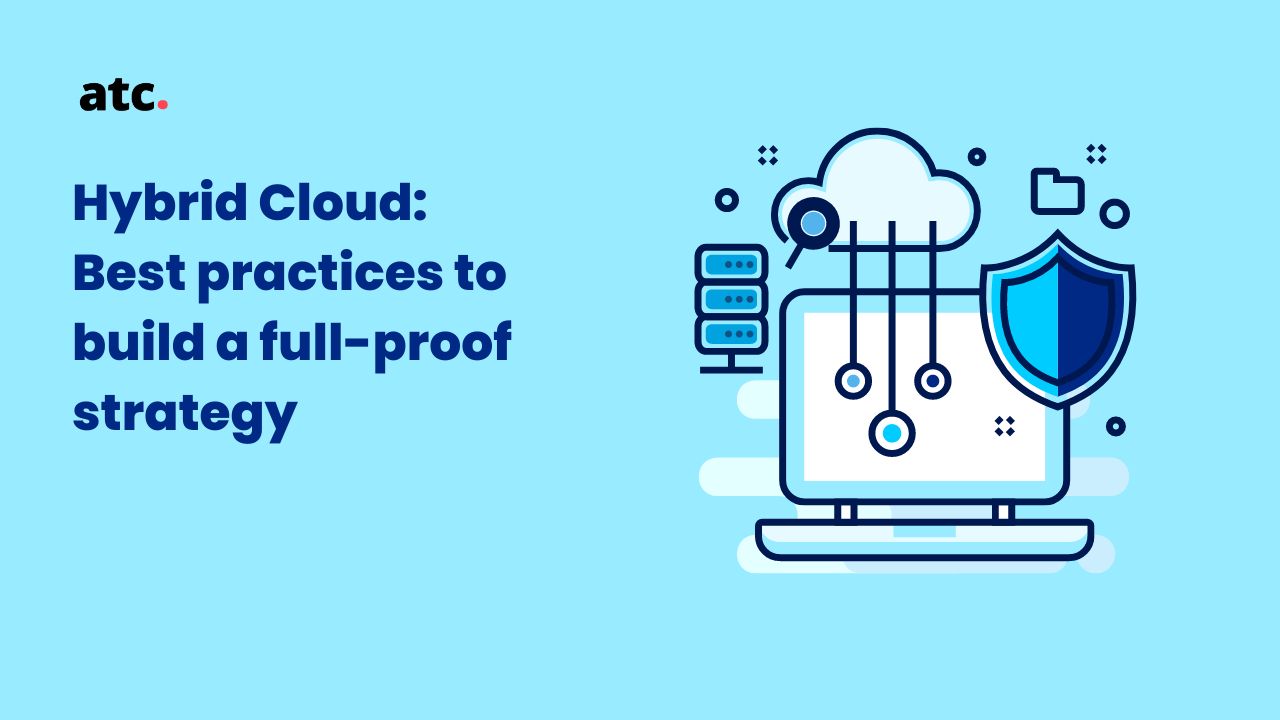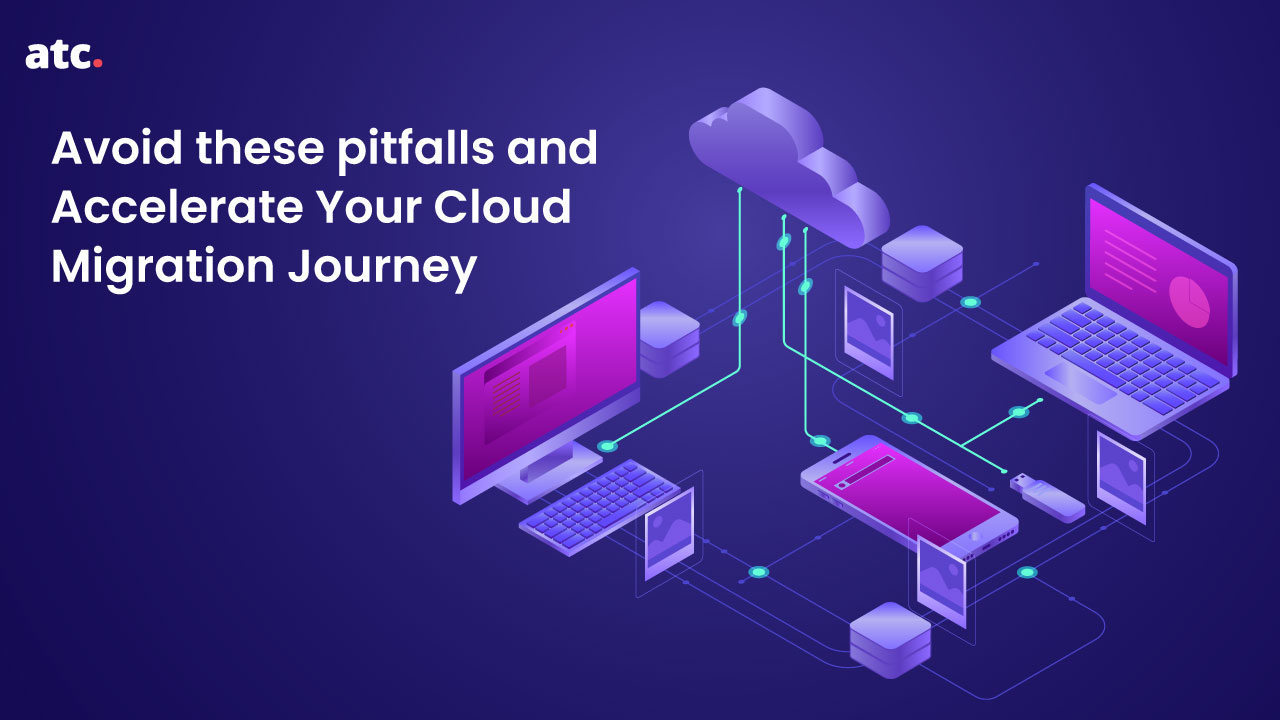Subscribe to the blog
Each business- tech, telecommunication, banking, or insurance needs proper infrastructure to carry out its operations efficiently and deliver the best applications and services to its customers.
This is easier said than done.
Building an enterprise infrastructure with all the components, including hardware, software, storage, and network resources from the ground up, is a costly endeavor that requires time and effort.
Enter cloud solutions.
Cloud technology for business started as a buzzword during the early 2010s, but it transformed how businesses craft customer experiences. Today, 67% of enterprise infrastructure is cloud-based.
Cloud gives businesses the power to scale their operations from anywhere in the world, helping businesses set themselves apart and serve diverse customers. In this article, we will walk you through the innovative ways companies are succeeding with cloud solutions and how you can do the same for your business!
1. Netflix Empowering Remote Artists with Cloud
Netflix is one of the world’s leading entertainment companies, producing content for diverse audiences in over 190 countries. The company has been at the forefront of bringing innovation to the entertainment industry and supports employee diversity by helping remote artists collaborate and work together effectively.
Here’s how they managed to create an innovative culture for their company:
The company uses cloud technology to provide artists with remote workstations having interactive tools, including the VFX studio, to help them create powerful visuals.
These remote workstations have the secure and sizeable storage capacity to give artists the creative freedom to design high-quality virtual properties. With the cloud, the company offers its employees a platform that does not lag, and facilitates low latency, creating a seamless content-creation experience for the employees. They can log in and get started right away.
2. Coca-Cola Using Cloud and AI to Collect Data from 7,00,000 Vending Machines in Japan!
Coca-Cola is a brand that has a huge presence worldwide. To remain competitive, the company uses the latest technologies like big data, cloud, and AI to make strategic decisions about its product placements.
Here’s how they innovated their marketing strategy in Japan:
Coca-Cola uses AI and cloud technology to collect data from their 7,00,000 vending machines in Japan to find the best strategy for placing their products across the machines.
Traditionally, the sales managers used to place products based on the weather. For instance, they will put hot beverages in the front row in winter.
But Coca-Cola wanted to adopt a more strategic approach. So they collected data for proper analysis.
This complex data includes millions of transactions saved on the cloud. The data was then analyzed using AI and machine learning to help the company uncover insights and patterns into customer behavior. Based on the data, the company decided to place its products strategically in a way that provides more visibility and matches customer preferences.
3. eBay Using Kubernetes to Boost Its Search Performance!
With 159 million active users and 19 million sellers, eBay is an e-commerce leader, just second to Amazon. For running such a massive marketplace with billions of listings, the company needs the best technology to transform its operations and create a seamless experience for employees and customers.
Here’s how Kubernetes helped them increase their application’s search performance!
Unlike others, eBay relies on open-source technologies to enhance its IT operations. It shifted to Kubernetes to improve the application’s search capabilities without compromising the app performance. Kubernetes is an open-source platform for automating deployment and scaling your applications on the public or private cloud.
Traditionally, upgrading eBay’s search engine took a lot of time and effort as the search team had to consult with the hardware team and then provision the OS. With Kubernetes, the company cut its provisioning time, increasing the speed and flexibility of its search engine.
4. 81% of Insurers Using Cloud-Based Technologies for Claim Management
A 2021 IBM survey found that 81% of insurers use cloud-based technologies to cut costs, reduce manual data handling and analyze data at scale.
The reason is simple- To create a satisfying claim experience for customers.
Here’s how the cloud is helping insurers transform claim management!
- Detecting frauds: Legacy systems are vulnerable to cyberattacks and security threats. By embracing cloud technology, insurers pave the way for better data analytics, including adopting AI and machine learning to detect fraud patterns in real-time to eliminate the risk of cyber attacks.
- Speed-to-market: Cloud computing enables insurers to work with policyholders directly and process claims faster. They help them become productive by shifting their focus away from gathering evidence and completing tedious paperwork, thereby speeding up the time to market and having a competitive edge over competitors.
- Leverage data to automate claim processing: Progressively using the cloud and integrating technologies like RPA will help you automate claim handling. These solutions eliminate time wasted on manual processes and help you focus more on your customers, creating claim processing a rewarding experience.
5. L'Oréal Uses Cloud to Create Data Warehouse!
L'Oréal has been an innovator in the beauty industry for almost 113 years. And the secret to the beauty giant’s success has been simple- science and data analysis.
With the vision to become a beauty-tech company, L'Oréal uses cloud technology for business transformation by using its rich data assets as effectively as possible.
The thing is that L'Oréal had a massive data footprint.
It needed a solution that helps make sense of these massive data sets and store them for future use.
Thankfully, cloud solutions with scalable infrastructure are helping the company sync data from multiple sources, including organizations and retail stores. With a sustainable data warehouse, the company can empower teams to make informed decisions and fuel its vision.
Here’s How You Can Use the Cloud to Accelerate Innovation!
From the above examples, it’s clear how organizations use the cloud for innovation.
But is it possible for you to take the leap?
Absolutely.
Let’s discuss in brief how you can innovate with the cloud cost-effectively!
1. Learn About the Different Cloud Solutions in the Market
The world of cloud computing has grown by leaps and bounds. And if you are planning to adopt cloud solutions or want to migrate from one cloud to another, it is vital to understand the market first.
Today, the cloud computing market has many solutions with different technology stacks, having multiple use cases that you can apply to your business to solve a problem and generate value.
Let’s look at the best-known cloud computing solutions in the market!
- SaaS: It provides businesses with complete cloud-based applications they can use over the internet. They have the underlying infrastructure, software, and data to help your company carry out various operations without hassle.
- PaaS: Platform as a service is a cloud computing model that provides developers with a complete cloud platform, including hardware, software, and infrastructure.
- IaaS: IaaS offers fundamental compute, network, and storage resources on-demand.
2. Create a Well-Defined Roadmap!
Now that you understand the market, it is time to craft an actionable plan. The first step is to assess the challenges and gaps you may face regarding cloud readiness.
Ask yourself the following questions when preparing a cloud strategy roadmap!
- Which approach will you adopt for cloud migration?
- How will the cloud solution impact your key processes?
- Which leaders will participate in the process?
- Do you have an internal team to assist in the migration process?
- How will you measure the impact of cloud solutions?
Once you have formulated your answers, create a visual roadmap to provide clarity to your stakeholders.
3. Choose Your Cloud Implementation Partner Wisely
A cloud implementation partner is someone who will listen to your requirements, recommend solutions, and help you migrate seamlessly.
But with so many players claiming to be experts, finding the one who will support your initiatives can be challenging.
This is why you should do your research.
Before partnering with any vendor, do check:
- Their website and the type of services they offer.
- Social proofs and read up the resources they have.
- Whether they offer complete support throughout the process.
- The industries they have served.
Let Us Help You Innovate Faster with Cloud!
Cloud transformation is something that no business owner can escape from!
At ATC, we can help you innovate your products and services faster and streamline your workflows with the best cloud technology. Whether you are a start-up or an established enterprise, we have an experienced team to help you implement the best cloud-based technologies for your business.
Unlock the best cloud solutions for your business by contacting us today!




